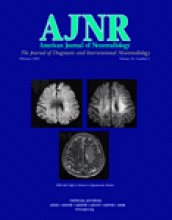The documentation and characterization of treatment-related neurotoxicity in primary CNS lymphoma (PCNSL) and other brain tumor patients have become increasingly relevant as therapeutic advances have improved long-term survival. The specific contribution of the disease itself and various treatment modalities to the development of neurologic and cognitive sequelae, however, remains to be elucidated. Whole-brain radiation therapy (WBRT) can produce leukoencephalopathy and may have a synergistic effect when combined with chemotherapeutic agents, particularly high-dose methotrexate (HDMTX). The neurotoxic potential of combined treatments is difficult to determine, especially when each technique can produce CNS damage individually. WBRT and HDMTX are considered the standard treatment for PCNSL. Although this treatment prolongs survival, there is a risk of neurotoxicity that increases with advanced age at treatment and in patients with prolonged disease-free survival. These regimens are primarily associated with the development of periventricular white matter damage through vascular injury, demyelination, and axonal necrosis. Several chemotherapeutic agents, particularly HDMTX and cytosine arabinose (ARA-C), have been shown to produce periventricular white matter abnormalities, but often less extensive than seen after combined technique treatment. The pathophysiological mechanisms of chemotherapeutic agents are not well understood, but several have been hypothesized, including demyelination, secondary inflammatory response, and microvascular injury. MTX-based chemotherapy, with or without osmotic blood-brain barrier disruption (BBBD), is efficacious and reduces the risk of delayed neurotoxicity and has been used more frequently in elderly PCNSL patients.
In this issue of the AJNR, Neuwelt et al report that in a group of PCNSL patients peritumoral enhancing abnormalities were associated with cognitive dysfunction at diagnosis, but not after a complete response to MTX-based chemotherapy and BBBD. Short- and long-term follow-up (available for a subset of patients) showed that some patients developed post-treatment diffuse or focal bilateral periventricular abnormalities, but they were not related to cognitive performance, which remained stable or improved over time (1). The authors concluded that “imaging changes, which are not tumor related, do not appear to be associated with cognitive decline.” Several factors may, however, account for the lack of association between white matter abnormalities and cognitive performance. The treatment technique used may indeed produce only limited damage to the white matter, which falls below the threshold necessary to produce cognitive impairment. The authors reported cognitive function as a summary score, and no correlations between white matter abnormalities and specific cognitive functions (e.g., executive, processing speed) were reported. Therefore, it is unknown whether performance on some cognitive domains was associated with either diffuse periventricular or regional white matter abnormalities.
The association between diffuse treatment-related white matter abnormalities and the presence or severity of neuropsychological dysfunction in brain tumor patients is unclear. Treatment-induced cognitive dysfunction has been documented in several studies that included neuropsychological assessment; the cognitive domains found to be most sensitive to treatment side effects include attention and working memory, learning and retrieval of new information, and speed of information processing. A moderate association between treatment-related white matter changes and cognitive impairment was found in some, but not all, studies (2–5). Similarly, correlations between extent of white matter abnormalities and cognitive impairments have been reported in some studies of patients with disorders such as multiple sclerosis and HIV and in the elderly. The variable findings in the literature have been attributed in part to methodological factors (6), but it has also been suggested that more extensive white matter disease may be necessary to produce measurable cognitive deficits and that only specific cognitive domains, such as executive functions and information processing speed, are disrupted by diffuse white matter disease (6). The development and use of more advanced neuroimaging techniques may assist in clarifying some of these issues. For instance, recent studies assessing regional volumes of white matter in brain tumor survivors (7, 8) or using diffusion tensor imaging (9) have shown an association between white matter volume or integrity and cognitive dysfunction.
Neuroimaging and cognitive evaluations are best viewed as important complementary modalities in the assessment of treatment-related neurotoxicity and not surrogates for each other. There are instances in which some patients develop cognitive impairment in the context of relatively normal neuroimaging studies and others in which patients show only mild cognitive dysfunction but have extensive white matter disease. Further investigation of contributing variables, such as genetic risk factors or comorbid conditions that may place some patients at an increased risk for developing either signs or symptoms of neurotoxicity is critical to improving our therapeutic approaches to brain tumor patients.
References
- Copyright © American Society of Neuroradiology












